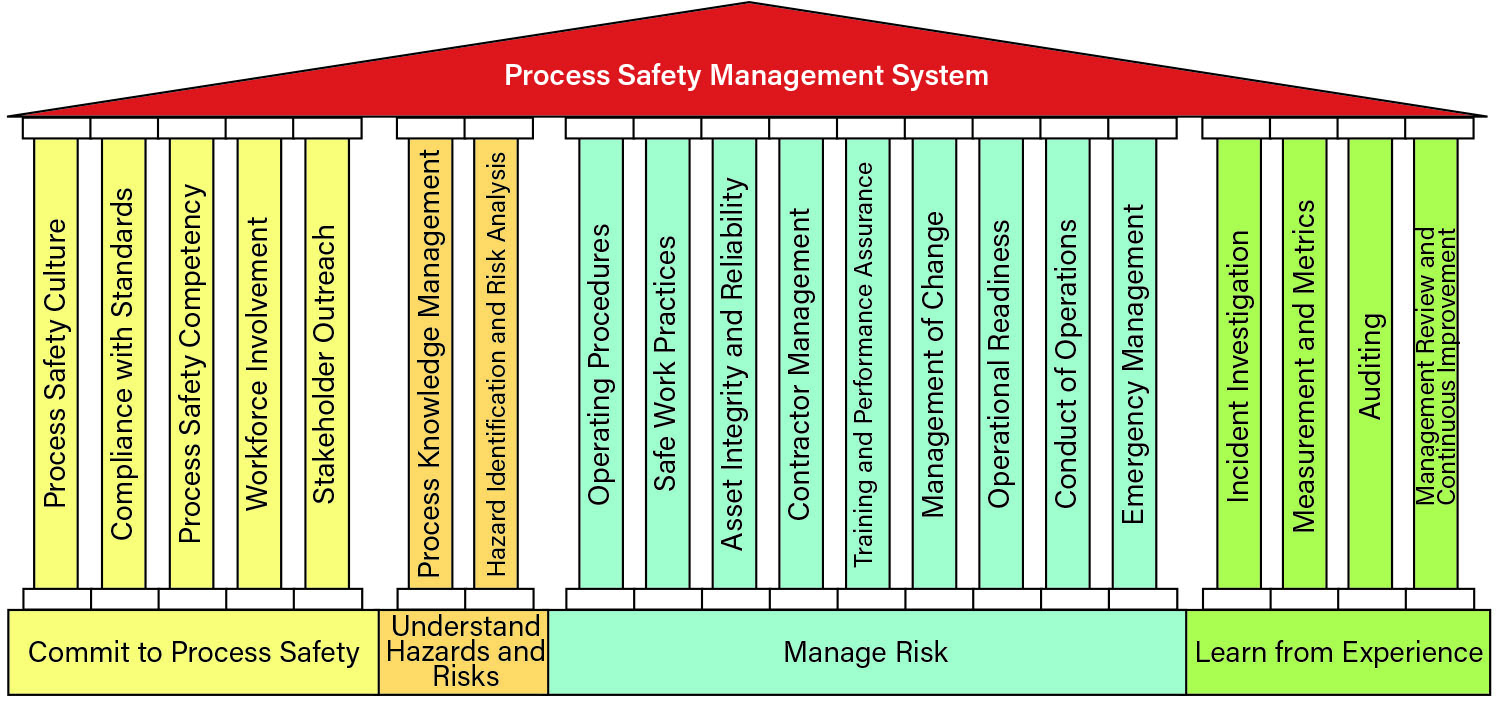Summaries are provided as public information available to engineers working in process safety. It is noted where there is a related book.
The Business Case for Process Safety
Topics
[Summary] Are You Prepared for the Coming Economic Recovery?
This document serves to alert the petrochemical industry to the impending problems that may be encountered during the economic recovery, to encourage planning and address resource gaps, and to review existing PS systems to verify their ability to handle the influx of changes that will occur.
Topics
[Summary] Recovery from Natural Disasters
This document analyzes and presents, in a “how to use” format, the past experiences and successes of various CCPS member companies, their “Lessons Learned,” and advice on how to prepare for and recover from a natural disaster.
Topics
[Summary] Enabling Conditions and Conditional Modifiers in LOPA
The Guidelines in this book characterize when and how to apply enabling conditions and conditional modifiers to Layer of Protection Analyses (LOPAs). A LOPA may have consequences and risk criteria expressed in final endpoint (impact) terms such as fatalities or environmental damage, and include conditional modifiers such as probability of fatality associated with a material or energy release. It may also take into account probabilities called enabling conditions that sometimes apply to scenario initiating events. One way to differentiate these two factors is that enabling conditions are associated with the part of an incident sequence leading up to a release of hazardous material or energy, whereas conditional modifiers are probabilities generally associated with the post-release part of an incident sequence.
Related Book
Guidelines for Risk Based Process Safety

The purpose of the RBPS Guidelines is to provide tools that will help process safety professionals build and operate more effective process safety management systems. These Guidelines provide guidance on how to (1) design a process safety management system, (2) correct a deficient system, or (3) improve process safety management practices.
RBPS Self-Assessment Tool - NEW!
- We are pleased to announce that the online RBPS self-assessment tool has been completed and is made available for employees of CCPS member companies. Click here to access the RBPS self-assessment tool, note you will need to log in to view this member-only page.
Additional Free Resources:
-
RBPS Summary:
-
Download 2 page overview of RBPS Guidelines
-
Download the 38-page summary of RBPS Guidelines
-
-
RBPS Web Resources
